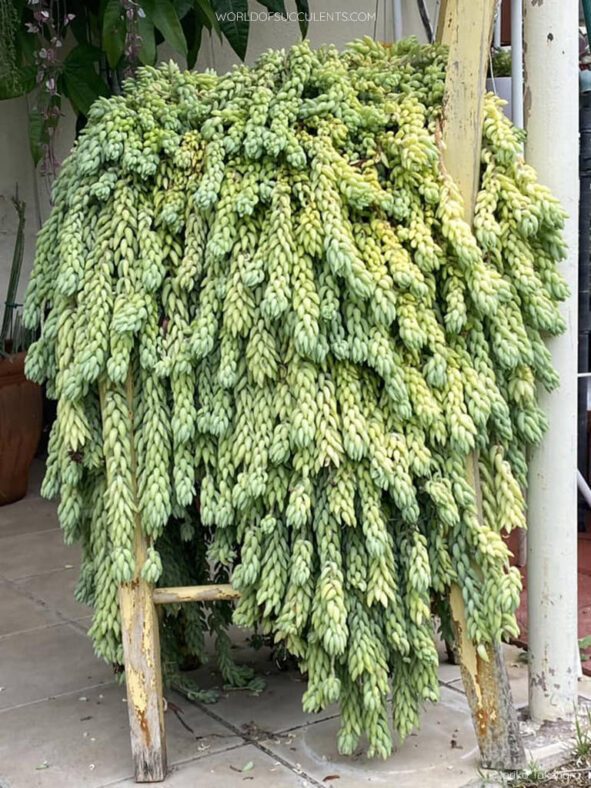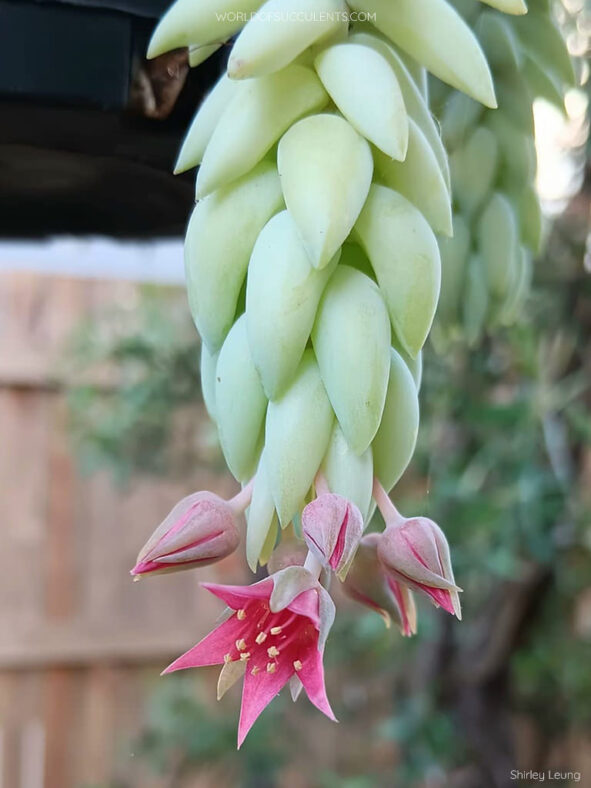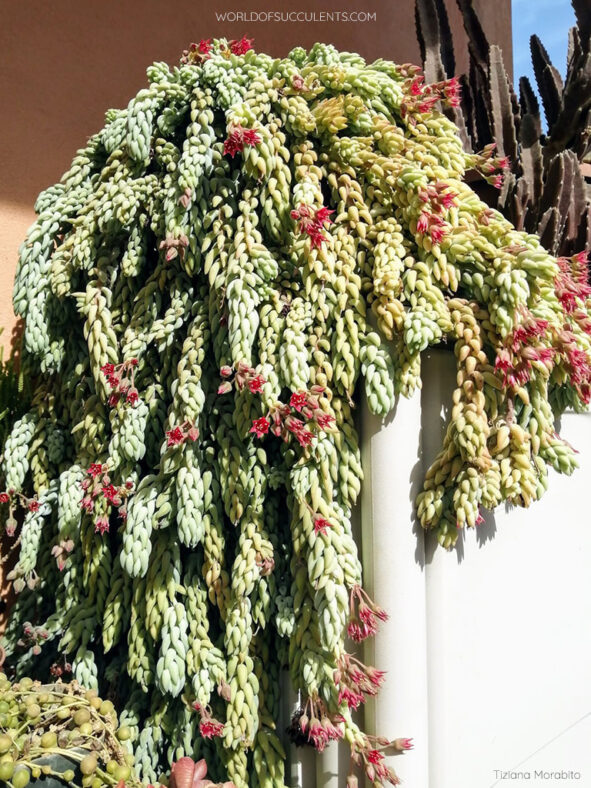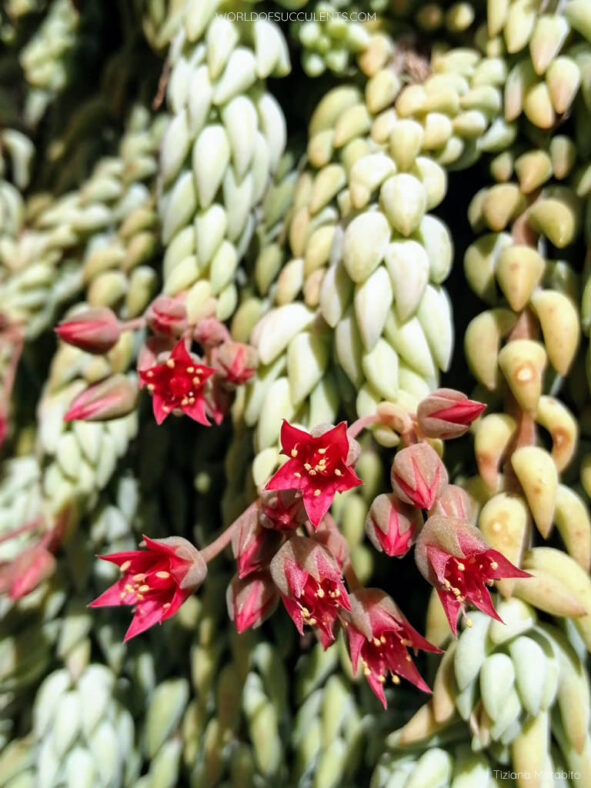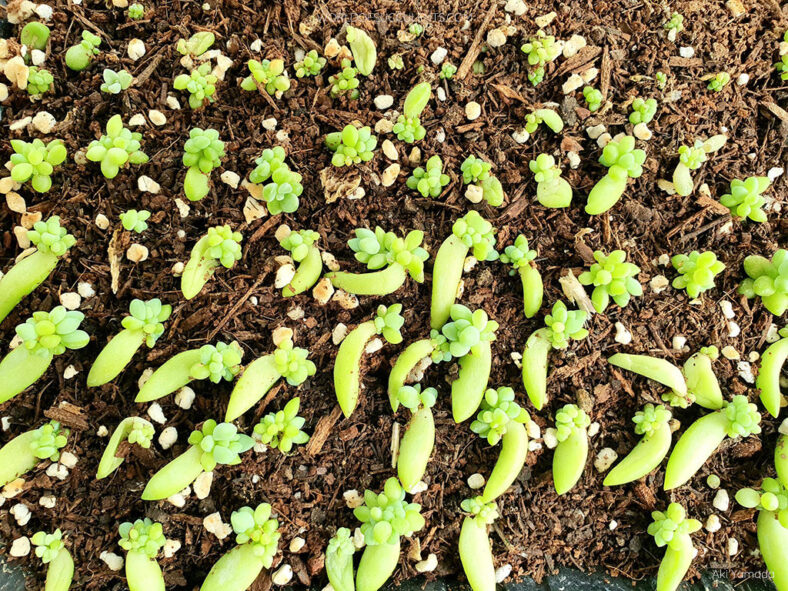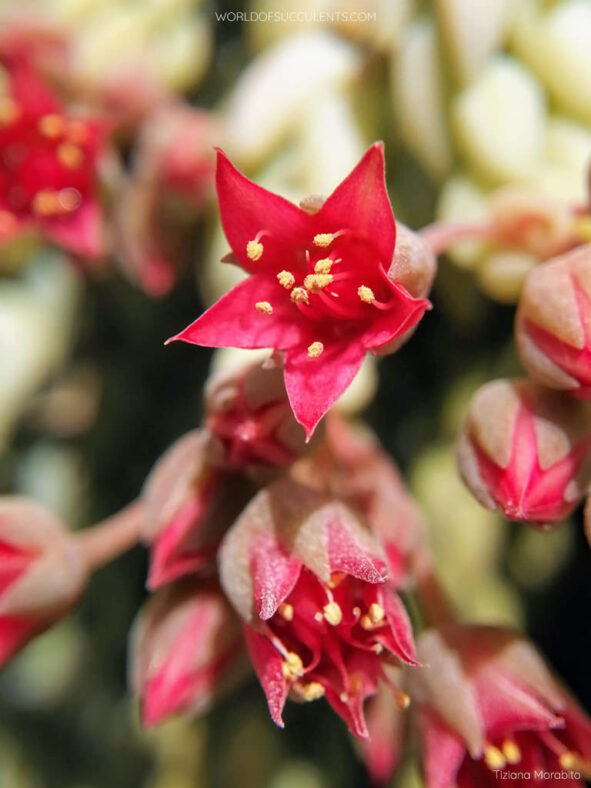Sedum morganianum was described 73 years before being found in the wild. The American botanist Eric Walther first saw it in 1935, growing in hanging baskets at Jardín Flottante, a small nursery in Coatepec, near Jalapa, in the state of Veracruz, Mexico. This species is similar to its relative, Sedum burrito, but can be distinguished by its longer and more pointed leaves. Sedum morganianum has gained the UK's Royal Horticultural Society's Award of Garden Merit.
Scientific Name
Sedum morganianum E. Walther
Common Name(s)
Burro's Tail, Donkey's Tail
Scientific Classification
Family: Crassulaceae
Subfamily: Sempervivoideae
Tribe: Sedeae
Genus: Sedum
Etymology
The specific epithet "morganianum" (pronounced "mor-gan-ee-AY-num") honors Dr. Meredith Walter Morgan (1887-1957), a hobbyist and expert grower from Richmond, California.
Origin
Sedum morganianum is native to Mexico. It grows on vertical cliffs in central Veracruz at elevations ranging from 1,900 to 2,300 feet (580 to 700 m).
Description
Sedum morganianum is an attractive succulent with slender, trailing stems adorned with overlapping gray-green to bluish-green leaves. The stems emerge from the base of the plant and can grow 3.3 feet (1 m) long. Although the stems initially grow upright, they trail downward as they lengthen. The leaves are spindle-shaped, recurved with pointed tips, and densely arranged in five distinct spirals, measuring up to 0.8 inches (2 cm) in length and 0.3 inches (0.8 cm) in diameter. They are covered with a fine, waxy bloom that can rub off when touched.
During the summer, Sedum morganianum produces small yet showy flowers arranged in clusters at the ends of the longest stems. The flowers have sepals the same color as the leaves, reddish-purple petals, and yellow anthers. They appear only on mature specimens with stems at least 10 inches (25 cm) long.
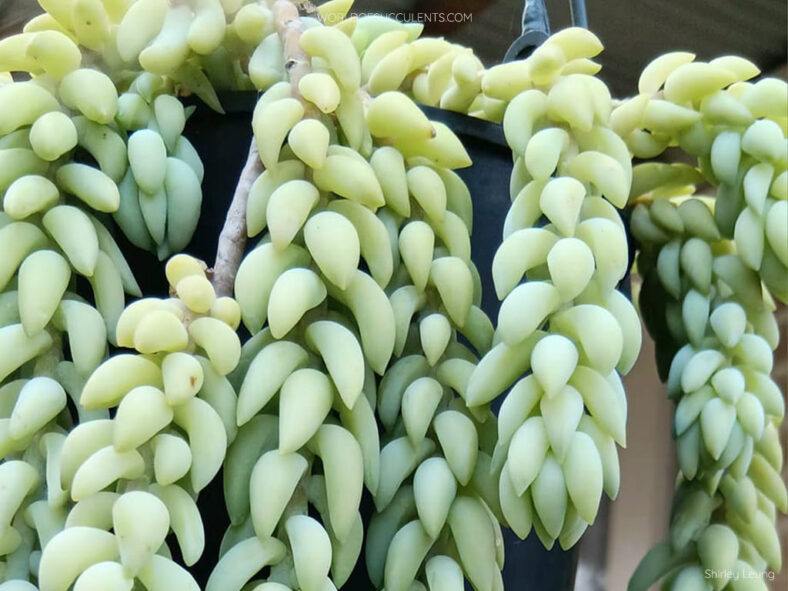
Forms and Hybrids of Sedum morganianum
Hybrids of Sedum morganianum
How to Grow and Care for Sedum morganianum
Light: Sufficient light is most important for growing a healthy plant. Sedum morganianum grows best in locations that receive full sun for at least six hours a day but will tolerate some shade. Place the plant near a sunny window or use artificial lights when growing indoors.
Soil: This plant does not tolerate waterlogged soil, so good drainage is essential to prevent root rot. Use a commercially available mix designed for succulents, or create your own.
Temperature: Sedum morganianum is well-tolerant of heat and low temperatures. It grows best in USDA Plant Hardiness Zones 10a to 11b, with average minimum winter temperatures ranging from 30°F to 50°F (-1.1°C to 10°C).
Watering: From spring to fall, water thoroughly and let the soil dry out before watering again. During the winter, water the plant just enough to keep it from shriveling. When watering, avoid getting the leaves, stems, and flowers wet.
Fertilizing: Feed a water-soluble fertilizer diluted to half the recommended strength during the growing season. However, feeding is unnecessary if you provide the plant with fresh soil on an annual basis.
Repotting: When Sedum morganianum outgrows its current pot, repot it into a larger one during the spring. Ensure the soil is dry before beginning the repotting process.
Propagation: It is easy to propagate Sedum morganianum by taking leaf or stem cuttings during the growing season or by sowing seeds in spring or summer.
Learn more at How to Grow and Care for Sedum.
Toxicity of Sedum morganianum
Sedum morganianum is not considered toxic to humans, but it can be mildly toxic to pets and children.
Links
- Back to genus Sedum
- Succupedia: Browse succulents by Scientific Name, Common Name, Genus, Family, USDA Hardiness Zone, Origin, or cacti by Genus
Photo Gallery
Click on a photo to see a larger version.
